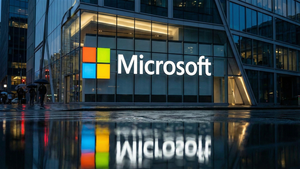
Lucky Strike’s first quarter results were met with a negative market reaction, as revenue and adjusted profit both missed Wall Street expectations. Management cited persistent weakness in the corporate events segment, especially in California, as the main factor behind flat sales and declining margins. CEO Thomas Shannon acknowledged that layoffs and cost-cutting in the tech sector weighed heavily on West Coast performance. Despite these headwinds, Lucky Strike saw growth in its leagues business and highlighted early traction from new and rebranded venues. The company responded with aggressive expense management, including reductions in payroll and maintenance costs, to help limit the impact on profitability.
Is now the time to buy LUCK? Find out in our full research report (it’s free).
Lucky Strike (LUCK) Q1 CY2025 Highlights:
- Revenue: $339.9 million vs analyst estimates of $359.8 million (flat year on year, 5.5% miss)
- Adjusted EPS: $0.05 vs analyst expectations of $0.24 (78.6% miss)
- Adjusted EBITDA: $117.3 million vs analyst estimates of $137.2 million (34.5% margin, 14.5% miss)
- Operating Margin: 18.3%, down from 21% in the same quarter last year
- Same-Store Sales fell 5.6% year on year (0.9% in the same quarter last year)
- Market Capitalization: $1.37 billion
While we enjoy listening to the management's commentary, our favorite part of earnings calls are the analyst questions. Those are unscripted and can often highlight topics that management teams would rather avoid or topics where the answer is complicated. Here is what has caught our attention.
Our Top 5 Analyst Questions Lucky Strike’s Q1 Earnings Call
- Matthew Boss (JPMorgan) asked about trends in walk-in versus corporate events and how management views business model resilience. CEO Thomas Shannon noted corporate events tend to rebound quickly after downturns, while retail and leagues remain steady.
- Steven Wieczynski (Stifel) inquired about the magnitude and causes of the same-store sales decline. CFO Bobby Lavan pointed to an unexpected worsening in corporate events, especially after West Coast fires, with improvement expected as tougher year-over-year comparisons pass.
- Jason Tilchen (Cannacord Genuity) sought details on the impact and cost efficiency of the Lucky Strike rebranding. President Lev Ekster said rebranded centers saw higher traffic and excitement, with modest costs and scalable benefits for future marketing.
- Michael Kupinski (Noble Capital Markets) questioned the role of tariffs and broader economic concerns in corporate event weakness. Shannon described the impact of tariffs as “very pronounced,” influencing both customer sentiment and construction costs, leading to canceled expansion projects.
- Jeremy Hamblin (Craig-Hallum Capital Group) asked about SG&A flexibility amid new business lines and persistent uncertainty. Lavan noted a non-cash retirement charge raised SG&A in the quarter, but underlying costs are expected to trend lower as efficiencies are realized.
Catalysts in Upcoming Quarters
In upcoming quarters, the StockStory team will be watching (1) the pace of recovery in corporate events, especially in California, (2) sustained growth and engagement in leagues and retail walk-in business, and (3) the contribution of new water parks and family entertainment centers to seasonal revenue. Execution on cost controls and the impact of ongoing rebranding will also be critical to track.
Lucky Strike currently trades at $9.84, up from $9.52 just before the earnings. Is there an opportunity in the stock?Find out in our full research report (it’s free).
High-Quality Stocks for All Market Conditions
Donald Trump’s victory in the 2024 U.S. Presidential Election sent major indices to all-time highs, but stocks have retraced as investors debate the health of the economy and the potential impact of tariffs.
While this leaves much uncertainty around 2025, a few companies are poised for long-term gains regardless of the political or macroeconomic climate, like our Top 9 Market-Beating Stocks. This is a curated list of our High Quality stocks that have generated a market-beating return of 183% over the last five years (as of March 31st 2025).
Stocks that made our list in 2020 include now familiar names such as Nvidia (+1,545% between March 2020 and March 2025) as well as under-the-radar businesses like the once-micro-cap company Kadant (+351% five-year return). Find your next big winner with StockStory today.






